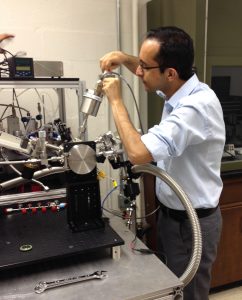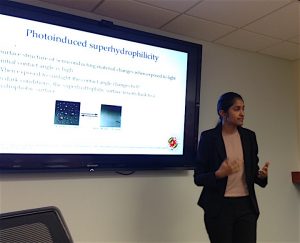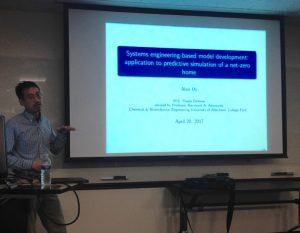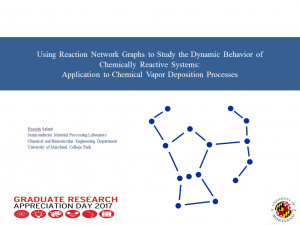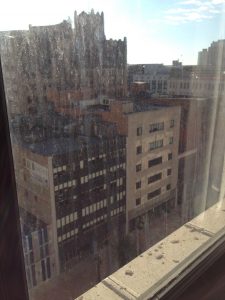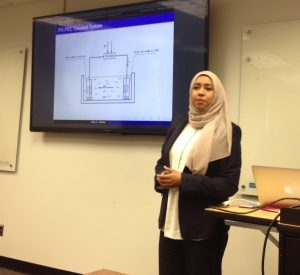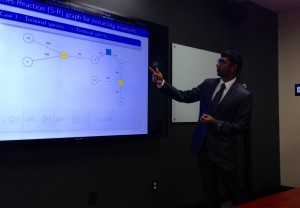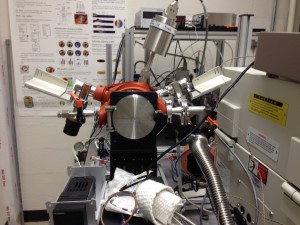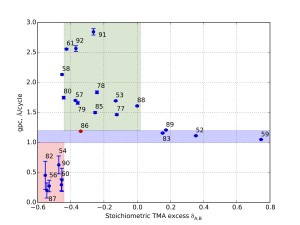 Since January of 2016, nearly everyone in our research group has participated as a member of Team Maryland for the 2017 Solar Decathlon, a biennial competition sponsored by the US DoE in which student teams design and build solar-powered homes.
Since January of 2016, nearly everyone in our research group has participated as a member of Team Maryland for the 2017 Solar Decathlon, a biennial competition sponsored by the US DoE in which student teams design and build solar-powered homes.
In addition to helping design and construct the electrical, mechanical, and other house engineering subsystems, our group was responsible for developing a highly detailed, physically based house dynamic simulator and most of the home automation systems. Virtual reACT runs every morning and predicts the house states over the day based on local weather forecasts. This ability to forecast future energy needs and generating capability was crucial to the success of our house achieving nearly perfect net-zero electrical power performance during the October Decathlon competition period in Denver, where Team Maryland took second place overall and first in US teams.

